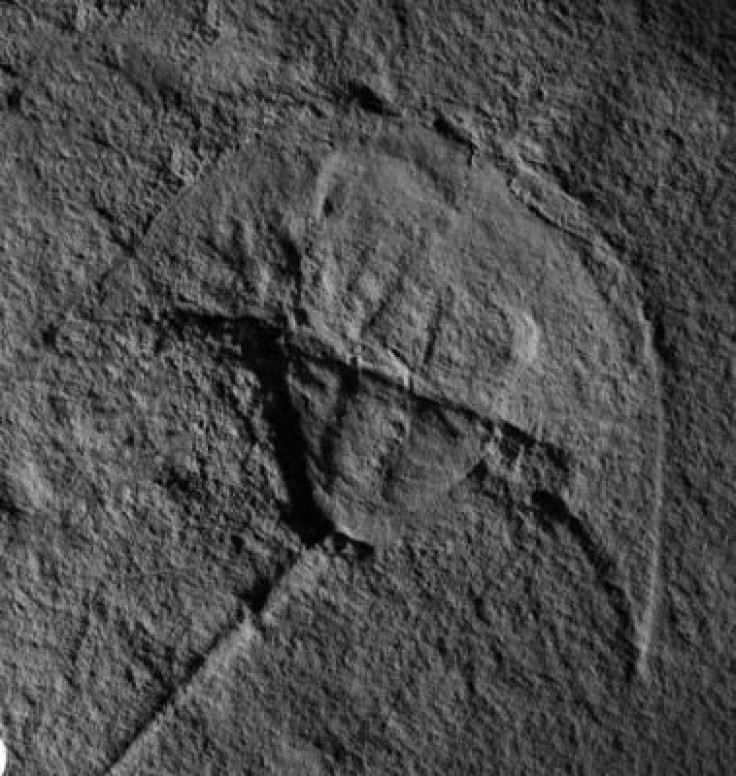PHOTO: Prehistoric ‘Darth Vader’ Fossil Looks Like Star Wars Villain
An extinct animal has joined the dark side of the Force, as paleontologists named the prehistoric critter for Darth Vader after discovering a fossil that looked like the Star Wars villain’s signature helmet.
It was useless to resist naming the horseshoe crab Vaderlimulus once it was dug up, the remains of an animal that lived 245 million years ago. According to the New Mexico Department of Cultural Affairs, the fossil is the first North American horseshoe crab species found that has dated to the Triassic geological period, the same era that saw the rise of the dinosaurs.
Horseshoe crabs go back as far as 470 million years, and are still around today.
“There are only four species of horseshoe crabs alive today, and their populations are decreasing,” the department explained. “They are not true crabs but are more closely related to scorpions and spiders. Modern horseshoe crabs are often considered ‘living fossils’ due to having shown little apparent change in physical appearance over a vast period of geologic time.”
A study in the German paleontological journal Neues Jahrbuch für Geologie und Paläontologie says the Darth Vader-looking horseshoe crab fossil was found in southeastern Idaho and is “mostly complete and moderately well preserved.”
The paleontologists say the Darth Vader doppelgänger adds to the information experts have about the evolution of the horseshoe crab.

Based upon what scientists know about horseshoe crabs past and present, “Vaderlimulus likely inhabited a shallow, possibly transitional freshwater coastal setting,” the researchers wrote in their study.
The team placed the new find into a horseshoe crab family called Austrolimulidae that was branching out from marine homes to freshwater ones during the Triassic period. According to the cultural affairs department, Vaderlimulus has a weird body shape, and that is a characteristic that is linked to such a change in environment.
Horseshoe crabs, which are found on Asian and North American coasts, get their name from the shape of their hard shells, although they also look a bit like Army helmets. The eyes are located on the top of that exoskeleton. Another visible characteristic is their tails, which they use to steer themselves in the water. Flip them over to their undersides and you can see their pincers, multiple pairs of legs and segmented abdomen.
The U.S. National Oceanic and Atmospheric Administration’s National Ocean Service says horseshoe crabs are important for both their environments and medical science. Creatures like birds and turtles eat their eggs and scientists use their blood to test medicines like vaccines because of its clotting qualities.
“Every year, many thousands of horseshoe crabs are harvested from their habitats, ‘bled’ of about one-third of their blood, then returned to the beach,” NOAA says.

© Copyright IBTimes 2024. All rights reserved.











